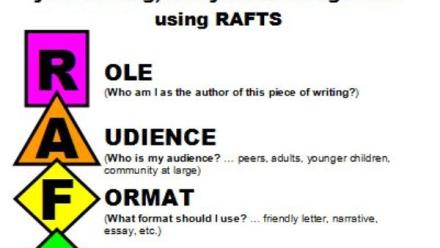
Reading and Writing Strategies

RAFT Writing
The RAFT strategy encourages students to write creatively, consider a topic from a different perspective, and to gain practice writing for different audiences.
Download a Graphic Organizer
RAFT is a writing strategy that helps students understand their role as a writer, the audience they will address, the varied formats for writing, and the topic they’ll be writing about.
- R ole of the Writer: Who are you as the writer? A pilgrim? A soldier? The President?
- A udience: To whom are you writing? A political rally? A potential employer?
- F ormat: In what format are you writing? A letter? An advertisement? A speech?
- T opic: What are you writing about?
Why use the RAFT strategy?
Students must think creatively and critically in order to respond to prompts, making RAFT a unique way for students to apply critical thinking skills about new information they are learning. RAFT writing can be used across disciplines as a universal writing approach.
How to create and use the strategy
- Walk students through the acronym RAFT and why it’s important to consider various perspectives when completing any writing assignment.
- Display a RAFT writing prompt to your class and model how you would write in response to the prompt.
- Have students react to another writing prompt individually, or in small groups. It works best if all students react to the same prompt so the class can learn from each other’s responses.
- As students become comfortable in reacting to RAFT prompts, you can create more than one prompt for students to respond to after reading, a lesson, or a unit of study. Varied prompts allow students to compare and contrast multiple perspectives, deepening their understanding of the content.
Sample RAFT prompts
R: Citizen A: Congress F: Letter T: Taxation
R: Scout Finch A: Community of Monroeville, Alabama F: Eulogy for Atticus Finch T: Social Inequality
Strategy in action
For more RAFT prompts, review Doug Fisher and Nancy Frey’s compiled list of Picture Book RAFT prompts . You may also find a RAFT scoring rubric and additional RAFT examples helpful as you implement the RAFT strategy in your class. Now, let’s watch as a teacher uses the RAFT writing strategy in her science class.
Tips for success
- It’s important for students to learn how their writing may change for different perspectives. It’s helpful to show students examples of writings on the same topic and format but with different roles of the writer or audience.
- Once students are fluent using the RAFT strategy, they can take any topic and choose the role, audience, and format on their own.
Liked it? Share it!
Visit our sister websites:, reading rockets launching young readers (opens in a new window), start with a book read. explore. learn (opens in a new window), colorín colorado helping ells succeed (opens in a new window), ld online all about learning disabilities (opens in a new window), reading universe all about teaching reading and writing (opens in a new window).

- Terms of Use
- Privacy Policy
- Internet Cookies
- Instructional Exchange
- Educator's Toolkit
- Ayers Exclusives
- Tennessee Tools
- Education Events
- Conference Materials
- Crosswalk Charts
- Podcast Resources
- Webinar Sessions
RAFT: Role, Audience, Format, Topic
The RAFT strategy employs writing-to-learn activities to enhance understanding of informational text. Rather than write a traditional essay to explain a concept, students demonstrate their understanding in a nontraditional format. This technique encourages creative thinking and motivates students to reflect in unusual ways about concepts they have read.
RAFT is an acronym that stands for:
- Role of the writer: What is the writer's role: reporter, observer, eyewitness, object, number, etc.?
- Audience : Who will be reading the writing: the teacher, other students, a parent, editor, people in the community, etc.?
- Format : What is the best way to present this writing: in a letter, an article, a report, a poem, an advertisement, email, etc.?
- Topic : Who or what is the subject of this writing: a famous scientist, a prehistoric cave dweller, a character from literature, a chemical element or physical object, etc.?
The RAFT strategy encourages students to process information, rather than merely prepare answers to questions. Varied prompts allow students to compare and contrast multiple perspectives, deepening their understanding of the content when shared. Students are more motivated to undertake the writing assignment because it can be customized to fit different learning styles.
Implementation
- Decide on an area of study currently taking place in your classroom for which you could collaborate with the students and write a class RAFT.
- Think about the concepts or process skills that you want students to learn as they read a selected passage.
- Imagine how writing in a fun way may enhance students' understanding of the topic or concept.
- Brainstorm possible roles students could assume in their writing.
- Decide who the audience would be as well as the format for writing.
- After students have finished the reading, identify the role, audience, format and topic (RAFT) for the writing assignment.
- Assign the same role for all students, or let them choose from several different roles.
Classroom Management
- Describe the various perspectives that writers must consider when completing any writing assignment.
- Have a class think-aloud to come up with ideas for the piece of writing that you will create as a group.
- Review the basic content of the reading, but allow students to select the role, audience, format, and topic to write about.
- Model how you would write in response to the prompt.
- Allow student input and creativity as you craft your piece of writing.

Ms. George's Class
Teaching While Using Marzano's Strategies
March 5 by admin
How I Successfully Used the RAFT Strategy

RAFT strategy? What is that? It is a strategy that can be used in any subject area. RAFT stands for Role/Audience/Format/Topic, and writing from this aspect will provide students the opportunity to write from a perceptive that shows a better understanding and a higher level in their writing (Blackburn 56). I read about this strategy while reading Rigor Is Not a Four-Letter Word by Barbara R. Blackburn. I immediately used this strategy in the fall with my career exploration classes, and students were engaged and able to complete the task. I used this strategy again with my spring career exploration classes, and students were eager to begin this strategy. The RAFT strategy is a great strategy to assess the student’s knowledge of the lesson you taught.
Last fall, I instructed the whole class that they were to prepare a brochure on the topic of stress and how to relieve stress for high school students. Their role was a high school counselor developing a brochure for 8 th -9 th grade students. I showed them a model of what was expected and a rubric. Students had two class periods to complete the tasks and were allowed to use articles and worksheets we used for the topic of stress. This strategy worked well. The information was correct and informative. One negative was the design of the brochure. I work at an art school, and many of the artists are perfectionists. Although they were given two days and encouraged to work on it at home, they did not finish the artwork.
This semester, I deleted the artwork for the RAFT strategy. Last week, I posted five RAFT worksheets around the classroom. Students were instructed to write a 75-word speech or letter about work ethic skills. They were given a rubric for this assignment and discussed the expectations for this assignment in a think-pair-share mode. I gave students three minutes to walk around the classroom and decide on their RAFT assignment. I was impressed and shocked by the engagement of the students. Students quickly chose an assignment and began writing. Students were discussing which RAFT was better and they started working. Each class was given 15 minutes to write and instructed to finish it over the weekend.

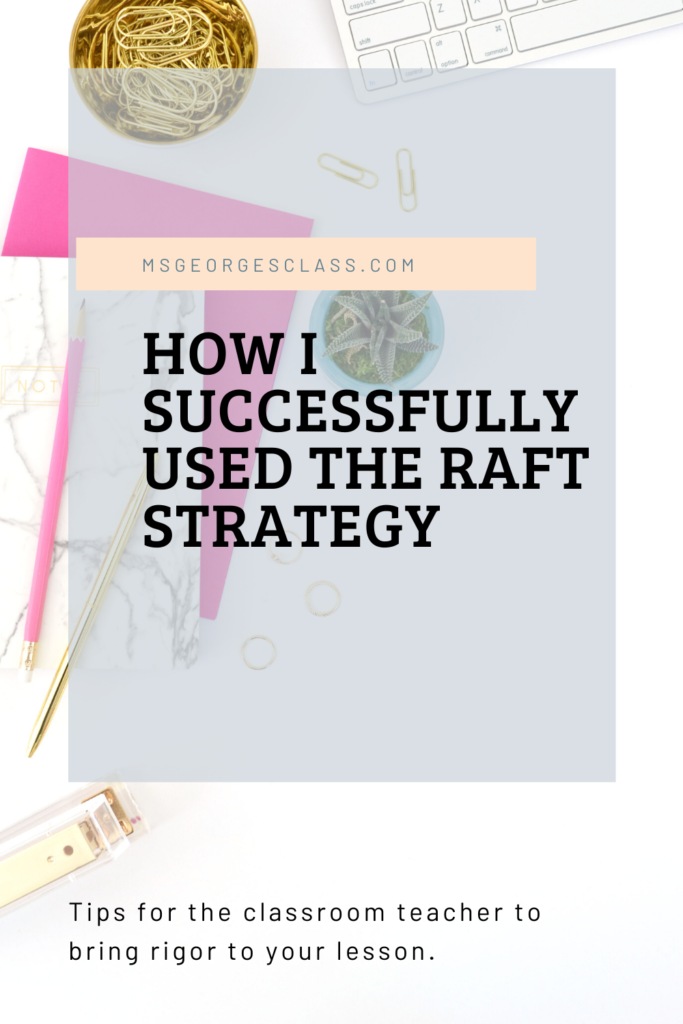
I walked around the room to observe students working, and most of the students chose to be the parent or teacher. The students were adding the 7 As of work ethic skills (attitude, attendance, appearance, ambition, acceptance, appreciation, and accountability) and explaining each skill. According to Blackburn, “when students are asked to write for a genuine purpose and audience, they tend to complete the assignment more effectively” (56). I witnessed passion when they were writing because they decided their role and what they wanted to express when writing about the 7 As. In each class, I gave the opportunity for four-five students to read their RAFT aloud. I was impressed by how they wrote from their roles. Not only did I provide rigor to the assignment, but also differentiation instruction. Students chose the area where they were strong and were able to produce successful pieces. Also, students were writing more than 75 words because they knew they would write more and elaborate on the topic.
In conclusion, the RAFT strategy provides rigor and differential instruction because students are able to show what they know and write to an authentic audience. This strategy can be used for every subject, including math. I saw a math teacher making copies of a RAFT form for her class. My students appeared to be more engaged and eager to write from a different perspective. I asked my students if they had ever completed a RAFT, and they quickly said no and continued to work on their assignment. It’s those moments that make me passionate about students learning and teaching.
Leave a Reply Cancel reply
Your email address will not be published. Required fields are marked *

How I Paid $20,000 on My Student Loan in One Year
A year has passed since my commitment to pay off my student loan debt began. I made the commitment in November 2017, but I consider March 2018 the date that I actually began making large payments towards the debt. To date, I have paid off $15,448.49 in principle of my student loan. I did not […]

How to Create a Welcoming Classroom Environment
Teachers are pillars of the community and are esteemed as leaders of the educational system. Our mannerisms, behaviors, speaking skills, and writing are taught, modeled, and reinforced. We stand at our doors and encourage students to come into our room with open minds, ready to learn, practicing good citizenship or behavior. As a middle/high school […]

Strategies to Improve Reading Comprehension

Having a Great Classroom Management Plan Makes Everyone Happy

RAFT Writing
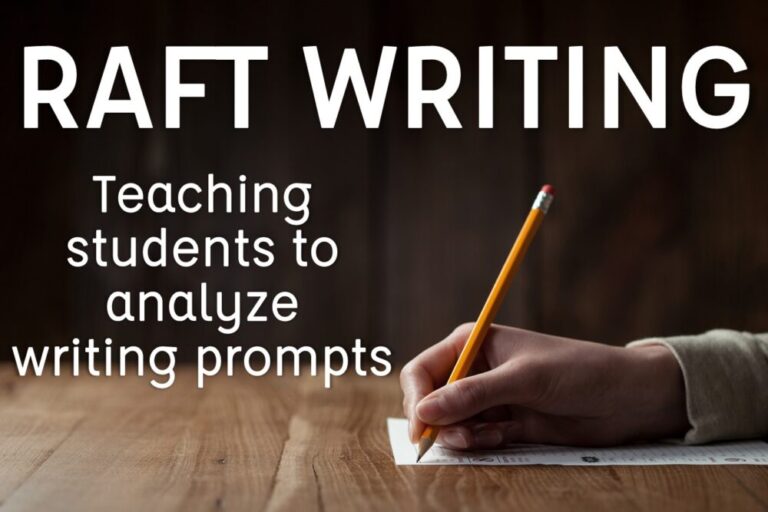
I first heard of RAFT writing several years ago as a strategy for students to show their content knowledge beyond just writing reports. Most of the suggestions for use have been in upper grades classrooms, especially in middle school and high school. It’s also a common format for writing in content areas to have students demonstrate their understanding of the topic that has been learned- often as a product at the end of the unit. RAFT Writing has students respond when the Role, Audience, Format, and Topic are laid out for students to do their writing, often showcasing their content knowledge. It’s also a great tool to help teachers write prompts for those content areas.
Over the years, however, I’ve used RAFT as a writing strategy for analyzing prompts in elementary school with students as young as first grade. RAFT has allowed me to give students experience and exposure with various writing types, build in creative writing into our writing centers, and give students a tool to use for state testing to analyze the prompts their given and respond appropriately.
RAFT is an acronym identifying the four aspects of a writing prompt:
R- Role (who is the character/narrator and their point of view)
A- audience (who is the writing for), f- format (what type of writing is expected), t- topic (what you are writing about).
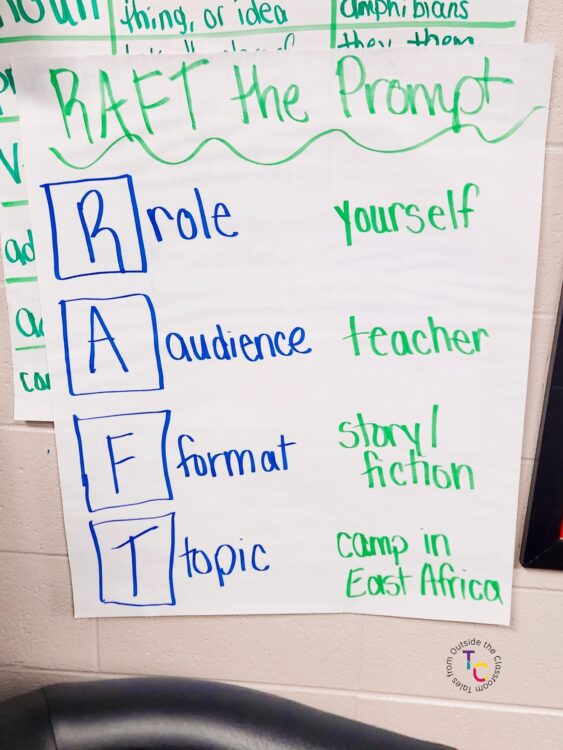
Examples of RAFT in content areas could be: ~Write an article as if you were a water droplet going through the water cycle.
~Write a story as a water droplet going through the water cycle.
~Pretend you are a child in 1774 in what will eventually be America. Describe what your life is like.
RAFT Writing is commonly used as essay responses at the end of units to measure students’ content knowledge. It’s also used in more open ended ways allowing for differentiation; the role and audience may be the only pieces given and students are able to choose the format and specific topic. Or, students are given the topic and format, but can choose their role and the audience. This is most often done in intermediate classrooms and higher as the focus is on the subject and content that has been taught, and not on the writing itself.
I’ve used RAFT as a strategy in other ways in my elementary classroom, and with other classes and groups of students, with good success.
RAFT Writing in the Primary Grades
I have used RAFT Writing with students as young as first grade as a way of building creative writing. In first grade I introduce it by explaining each of the components. We then generate, together, several different items for each component. We generally do about 4-6 and often use students in the class or people in the school as the role and audience. This helps make the task relevant to students. We then roll a dice to choose which item from each category we’ll use. We do a shared writing of it together, the first time. Then, we select another for the students to complete independently. After students are familiar with RAFT and how it can be used to generate a writing task, I use my RAFT Writing cards as an option during our centers to build students’ creative writing.
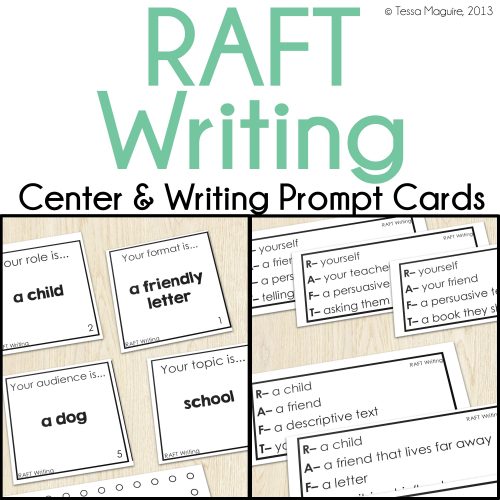
RAFT Writing as a Test Prep Strategy
I also really like using RAFT as a test prep strategy. On the state tests, students are given an on-the-spot prompt to respond to. Often, it’s in response to reading, and students are expected to respond from a range of genres. In my experience, students struggle to identify the proper genre to respond to or miss out on other key pieces of information, such as writing from a character’s perspective. With my third graders, it’s so important to me that they have a strategy to “attack” a difficult task that is given to them. RAFT is a strategy that can make them break down the prompt and help them feel ready to respond successfully.
We do our main writing work during our writers workshop four days a week. However, one day a week, we do specific RAFT practice. I begin the year doing various narrative writing tasks with RAFT, though I introduce it with examples of all 3 genres. I want my students to be successful with it so I don’t typically do much of the other genres until we have explicitly done them together. However, I will occasionally do something like a how-to, or something opinion based that I know they have strong feelings about. Our weekly RAFT practice gives my students an opportunity to work through the genres in a more spiral way than we typically do during writers workshop. It also allows me to continue to do focused lessons on specific strategies I want to see in their writing. This pre-writing step has made a world of difference for my students as they tackle the demands of state testing writing prompts!
After I’ve introduced and practiced RAFT with my students, we begin analyzing prompts. Using the strategy to think through and plan writing with the acronym is why it’s so effective and useful. This easy form is one I use when I begin having students independently analyze their writing prompts. I have students identify each area of RAFT and then I work to correct any misconceptions. You can download the free page by clicking the image below.
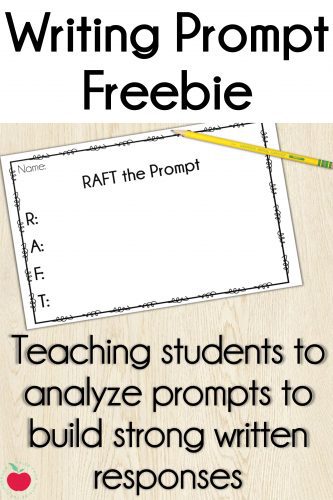
I also offer a variety of free RAFT writing resources in my free library. As we practice RAFT throughout the year, we move on to students writing based on the the prompt information. These printables and templates have us up and working with a prompt in just a few quick seconds. I have 5 ready to print digital RAFT prompts ready to go!
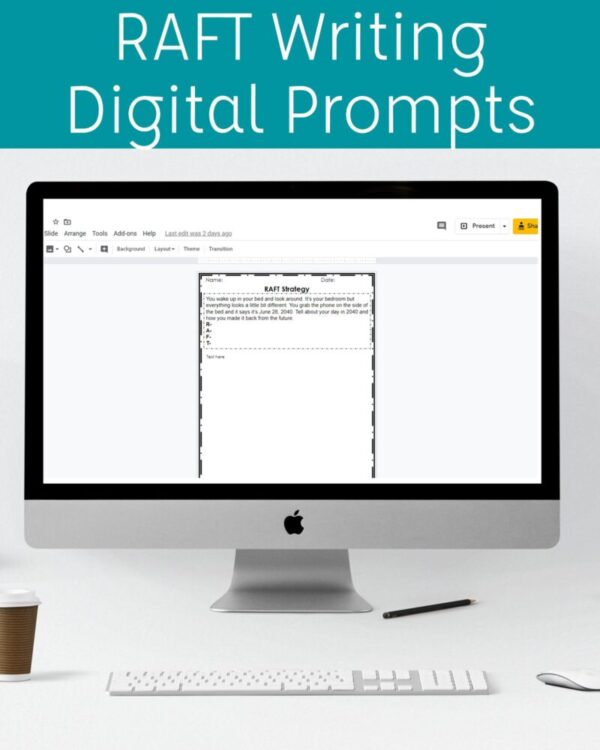
You can download each of them from my Free Library. To access it, sign up for my newsletter. After confirmation, you’ll receive an email with the link and password to access each of the files for yourself.
Signup for my semi-regular newsletter
Loading…
You will receive a confirmation email shortly. After confirming, you will be officially subscribed.
RAFT is such a useful writing strategy that can be incorporated in so many different ways in the classroom. In addition to our writing block, I also use digital prompt writing and journals to give students much needed practice responding to prompts on a regular basis. You can read more about that by clicking the link below.
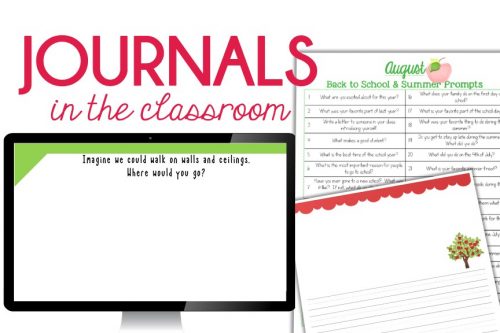
Newsletter Sign Up
Signup for my weekly-ish newsletter. I send out exclusive freebies, tips and strategies for your classroom, and more!
Please Read!
You have successfully joined our subscriber list. Please look in your e-mail and spam folder for Tales from Outside the Classroom. Often, the confirmation email gets overlooked and you're night signed up until you confirm!
I'd done it often in 4th grade, but not with much success in 2 nd. They have so much trouble, it seems, with " role" ( writing from that perspective) . I do love the format and the creativity it allows.
I started with silly ones like kindergartener. They were so excited to write with incorrect spelling and backwards letters. I let them do it once, but then they got it! Maybe it's also a developmental shift for them right about that age.
Cute idea! (You know that this is Debi, don't you, not Kelley? I can't figure out how to get her name off the account.)
Yes, I just figured you were on the wrong account 🙂
Pingback: E/LA Test Prep Strategies and Resources for 3rd and 4th Grades
Leave a Reply Cancel reply
Your email address will not be published. Required fields are marked *
Save my name, email, and website in this browser for the next time I comment.
This site uses Akismet to reduce spam. Learn how your comment data is processed .
LOOKING TO SUPPLEMENT?
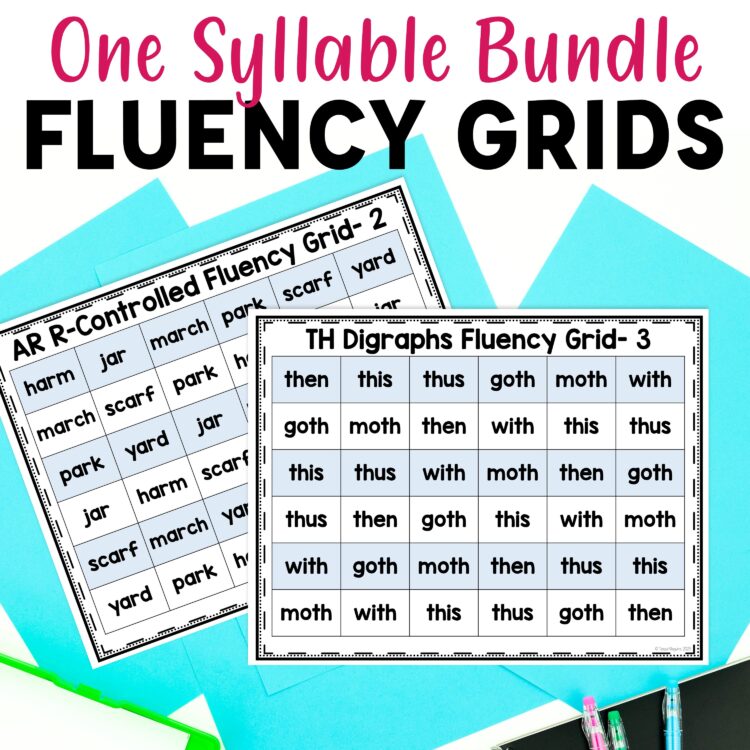
▹ NEWSLETTER ◃
You have successfully joined our subscriber list.
Hi! I’m Tessa!
I’ve spent the last 15 years teaching in 1st, 2nd, and 3rd grades, and working beside elementary classrooms as an instructional coach and resource support. I’m passionate about math , literacy , and finding ways to make teachers’ days easier . I share from my experiences both in and out of the elementary classroom. Read more About Me .
© 2024 Tales from Outside the Classroom ● All Rights Reserved
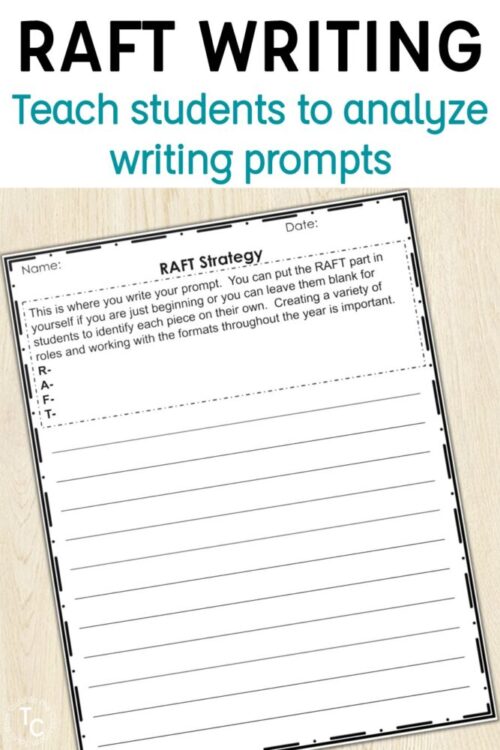
Let's keep in touch! Sign up for my newsletter!
RAFT Writing Template

About this printout
Students can utilize this printout to organize their writing as they learn to use the RAFT strategy . This printout enables students to clearly define their role, audience, format, and topic for writing.
Teaching with this printout
More ideas to try, related resources.
By using this printout to organize their writing, students learn to respond to writing prompts that require them to write creatively, to consider a topic from a different perspective, and to gain practice writing for different audiences.
The four categories of focus for a RAFT include:
- R ole of the Writer: Who are you as the writer? A movie star? The President? A plant?
- A udience: To whom are you writing? A senator? Yourself? A company?
- F ormat: In what format are you writing? A diary entry? A newspaper? A love letter?
- T opic: What are you writing about?
Before having students write their own RAFT, use this printout to model how students should use this technique. Discuss with your students the basic premise of the content for which you’d like to write, but allow students to help you pick the role, audience, format, and topic to write about. Allow student input and creativity as you craft your piece of writing. Have an in-depth discussion specifically about why you chose the different categories that you decided on ( R ole, A udience, F ormat, T opic). Model a think-aloud about why having a certain role and audience might make your stance or ideas about a certain topic different and may alter your writing style and, therefore, your format. See the Strategy Guide titled Using the RAFT Writing Strategy for more information and ideas pertaining to this technique.
- Give students a writing prompt (for which you have already chosen the role, audience, format, and topic) and have students react to the prompt either individually or in small groups, using this printout. It works best if at first, all students react to the same prompt so the students can learn from the varied responses of their classmates. Hold a class discussion about how students created their personal version of the assignment.
- As students become comfortable in reacting to RAFT prompts, you can create more than one prompt for students to respond to after a reading, lesson, or unit. Or, you may choose to give students a list of choices for each area and let them pick and choose their role, audience, format, and topic.
- Eventually, students may choose a role, audience, format, and topic entirely on their own. Varied prompts allow students to compare and contrast multiple perspectives, deepening their understanding of the content.
- Lesson Plans
- Professional Library
- Strategy Guides
- Print this resource
Explore Resources by Grade
- Kindergarten K

Helping Multilingual Learners Thrive

RAFT (Role, Audience, Format, Topic) Assessment: Great way to assess Multilingual Learners

Click the heart if you like this.

Choice in writing and assessment can be motivating and builds in differentiation, so you don't have to create a bunch of assignments for each student to meet them where they are. One of the most versatile and creative writing strategies is the RAFT (Role, Audience, Format, Topic). As the teacher, you can provide parameters for this assignment connected to a goal or standard from your content area. This assignment/assessment leads students to understand the purpose for writing, the audience they are writing to, the varied formats of writing in everyday life, and the specific topic that will be their theme. It's fantastic for Multilingual Learners because they can delve deep into a topic without providing a language-heavy document. All students benefit from higher-order thinking, creatively stretching and focusing directly on how they need to write to address specific audiences.
Thanks for reading Helping Multilingual Learners Thrive! Subscribe for free to receive new posts and support my work.
The following questions help students define with more depth the different aspects of the RAFT paper.
Role of the Writer: Who or what are you as the writer? An activist? A soldier? The President? Audience: To whom are you writing? A friend? Your teacher? Readers of a newspaper? Format: In what format are you writing? A letter? A poem? A speech? Topic and strong verb: What are you writing about? Why? What's the subject or the point?
Ways to teach RAFT explicitly, especially the first time you introduce it.
Project a completed RAFT example.
Describe each of the components of the RAFT: role, audience, format, and topic. (It may be helpful to have students in small groups create a large chart paper or a bulletin board for future reference).
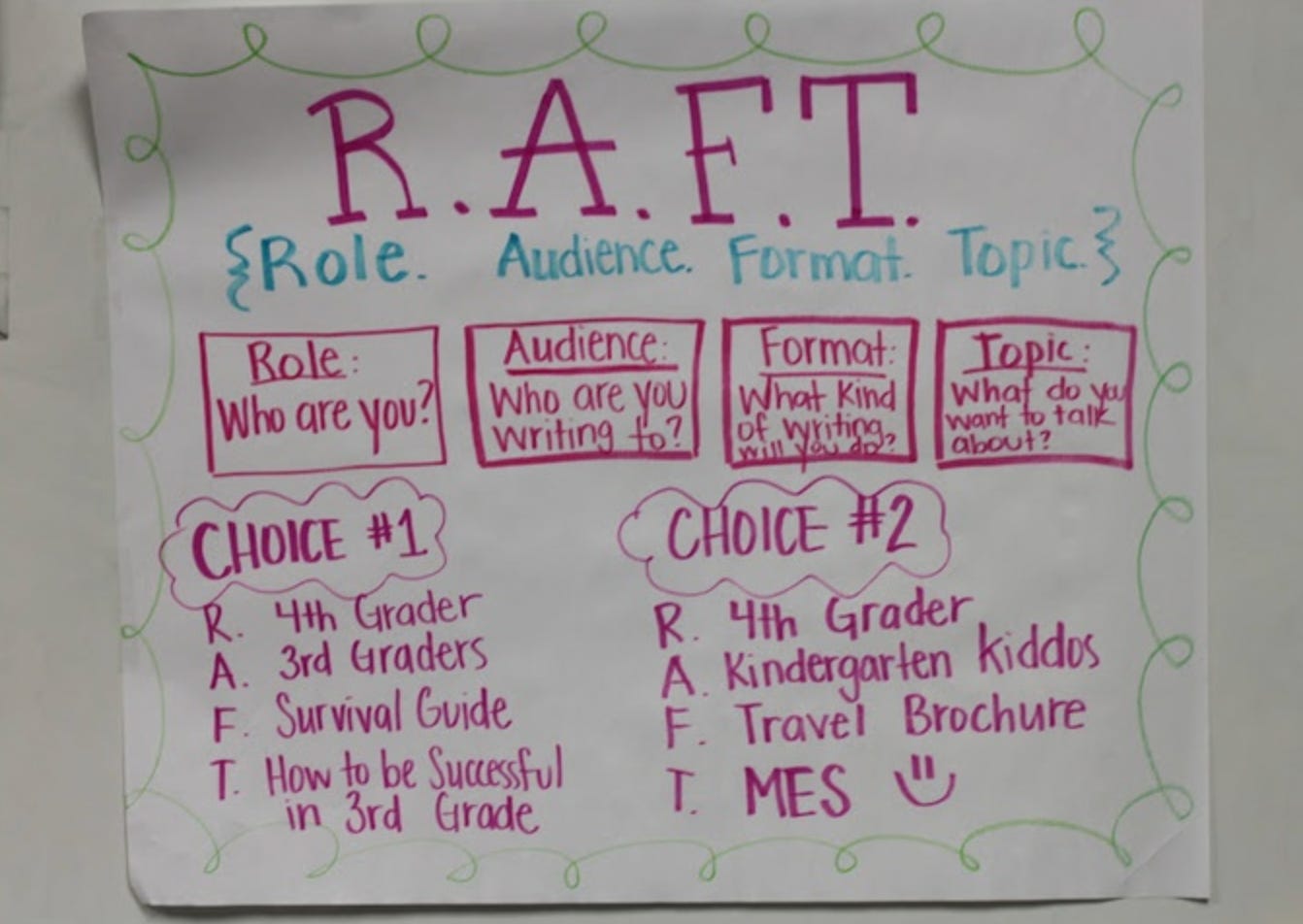
On a projector, model how to write responses to the prompts and discuss the key elements as a class. Keep this as simple and concise as possible for newcomers to the language.
Have students practice responding to prompts individually or in small groups. At first, it may be best to have all students react to the same prompt so the class can learn from varied responses.
The RAFT strategy has been adapted for students from K-12 and beyond. I use RAFT in my college classroom. Thinking of these four different aspects pushes them to think more deeply. I have listed some strategies that are particularly useful for MLs.
MLs can review the RAFT concept and assignment orally first. Have students work in pairs to explain what is meant by role, audience, format, and topic.
In small groups, students can create anchor charts describing and illustrating each of the elements of RAFT.
Have students role-play explanations of the different aspects of RAFT assignment.
Allow students to create bi- or multi-lingual responses to the RAFT assignment.
Encourage less language-heavy formats such as brochures, slides, or posters for those at the beginning stages of proficiency.
Pair students together to create RAFT assignments with clear expectations for both students. Be mindful of the linguistic capabilities of both students for the final product.
Provide models of RAFTs for students to use as scaffolding for completing their own.
MLs who know the content or topic of the RAFT may be able to produce more depth within the RAFT, especially if they are encouraged to look up material in their primary language.

Sample RAFT for a math class!
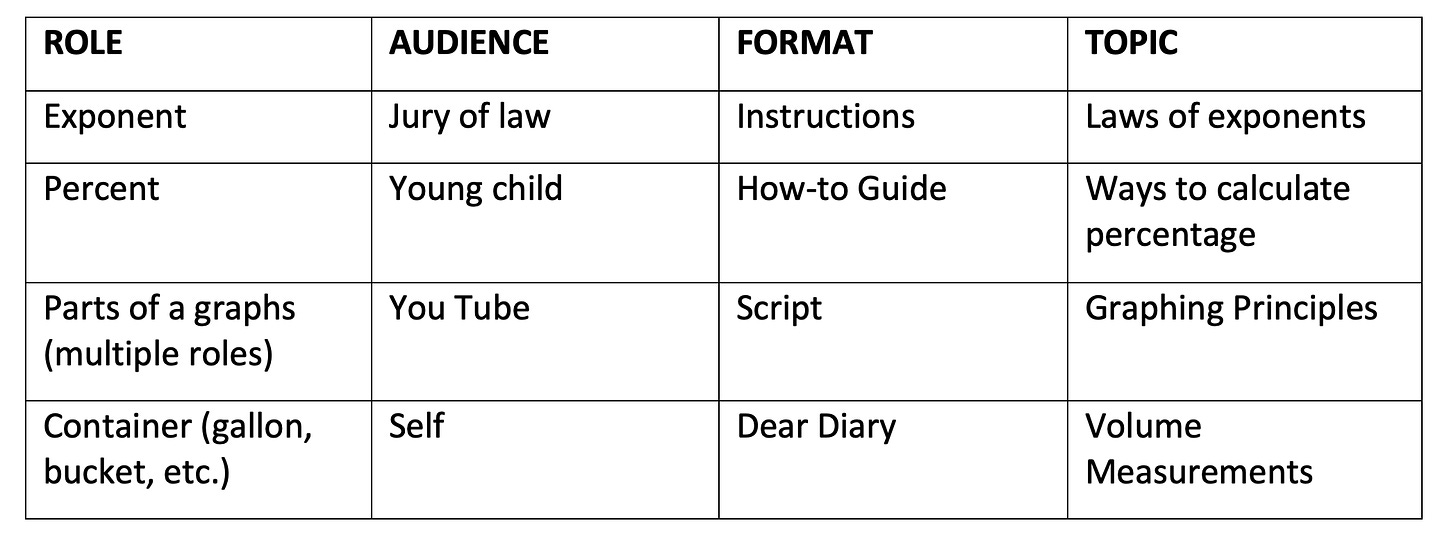
Leave a comment
Have you used the RAFT before with Multilingual Learners?
Share your experience.
Thank you for reading Helping Multilingual Learners Thrive. This post is public so feel free to share it.
Ready for more?
- Foundation Reports
- Our Offices
- Grants and Fellowships
- Grants Database
- Fellows Database
- Grantee Resources
- Art Collection
- Image Rights and Reproductions
- Library for American Art

William S. Jewett (1821–1873) The Promised Land – The Grayson Family , 1850 Oil on canvas 50 3/4 x 64 in. (128.9 x 162.6 cm) Terra Foundation for American Art, Daniel J. Terra Collection, 1999.79
Graphic Organizer: RAFT (Role, Audience, Format, Topic) Writing Strategies
Using raft writing strategies with artworks.
The RAFT (Role, Audience, Format, Topic) writing strategy, developed by Santa, Havens, and Valdes [1] , helps students understand their role as a writer and communicate their ideas clearly by developing a sense of audience and purpose in their writing. Works of art are rich sources of ideas and details for narrative and other kinds of writing. This RAFT strategy lends itself to use with works of art and to helping students develop their ideas and organize their approach before they begin to write.
In the example below, we added “questions to answer” to the RAFT matrix as a way to help students think through the components of this activity.
Download this material as a pdf for classroom use here .
RAFT activity: The Promised Land—The Grayson Family
Directions for teachers:
- Introduce students to the painting The Promised Land—The Grayson Family (or another work of art for which information is available). Have students read about it and discuss the story it tells.
- Show examples of ideas for the RAFT based on The Promised Land .
- Next, project the table below on the board. Ask students to pick a role from the chart, and identify an audience, format, topic, and questions for their written piece to answer.
- Give students a copy of the Role Development Chart worksheet and have them complete it before they begin writing.
Ideas to get students started on their RAFT:
Audience: family member, friend back home, friend already living in the West, foreigner considering moving to America, oneself (diary), museum
Format: letter, newspaper story, song, poem, diary entry, advertisement poster, caption
Topic: traveling to California, the difference between home and the West, the land/resources of the West, hunting, setting up camp
Questions: How do I feel about my journey? What do we do next? Where will we live? What challenges do I face?
Role Development Chart
Before writing your piece take time to put yourself into the role you have selected. Think deeply about who you are in this role and what you want to include from your reading to make your writing credible. What perspective will you have on the issue you think is most important?
[1] Santa, C., Havens, L., & Valdes, B. (2004). Project CRISS: Creating Independence through Student-owned Strategies. Dubuque, IA: Kendall Hunt.

- Privacy Overview
- Strictly Necessary Cookies
- 3rd Party Cookies
This website uses cookies so that we can provide you with the best user experience possible. Cookie information is stored in your browser and performs functions such as recognising you when you return to our website and helping our team to understand which sections of the website you find most interesting and useful.
Strictly Necessary Cookie should be enabled at all times so that we can save your preferences for cookie settings.
If you disable this cookie, we will not be able to save your preferences. This means that every time you visit this website you will need to enable or disable cookies again.
This website uses Google Analytics to collect anonymous information such as the number of visitors to the site, and the most popular pages.
Keeping this cookie enabled helps us to improve our website.
Please enable Strictly Necessary Cookies first so that we can save your preferences!

Collaborative Groups Made Simple
Ten Interesting Facts…The American Civil War
RAFT Writing Strategy
- By Gay Miller in Writing
June 24, 2014

RAFT is a writing strategy to help students focus on four areas of communication. This strategy helps students understand and convey information on a given topic. RAFT is an acronym for the following :
R ole of the Writer – The role is the perspective. Is the writer the President of the United States, a fifth-grade small-town student, a famous athlete, or any number of people? The role might include animals or inanimate objects such as toys.
A udience – The audience includes any person that will read the writing. This could be a large group such as a school body or an individual such as a school principal.
F ormat – Writing comes in all formats. Think letter, petition, instructions, television commercial, travel guide, newspaper article, journal entry, speech, and so on.
T opic – The topic is what you will be writing about. This can include endless possibilities.
An Example RAFT
A RAFT assignment might look like this:
Students are required to select one item from each column. One student may be a teacher writing a song for a group of parents asking them to change a rule in the school. Another person may be an artist addressing peers on a billboard that will inform them of an event. Dozens of options may be selected from just this one RAFT assignment.
This writing strategy not only helps students understand the varied formats of writing, but to know the audience they will address, their role as writers, and writing topics.
Get RAFT Activities here .
Teaching standards.
A RAFT lesson covers many teaching standards. In addition to the four areas of communication, assignments may also practice specific skills. For example, in the printables below the RAFT activity requires students to use onomatopoeia and/or alliteration.
The RAFT strategy works well with literature. Have students write from the perspective of one character addressing another character about a conflict in the novel.
RAFT may be used with science and social studies topics as well. The writer could be an apple talking to the other apples on the tree describing traveling through the digestive system. A chemist might write an email to workers in a factory explaining the dangers of mixing specific chemicals. A black bear could create a sign to post in the forest telling why he can’t eat the trout due to the harmful effects of acid rain. The role may be a pioneer creating a journal entry about the hardships of traveling by wagon.
You are only limited by your imagination.
Differentiating Instruction
The best part of the RAFT experience is the ease to differentiate instruction. For example, I placed students into three groups. Each group was given two choices of activities. The activities varied in difficulty from the easiest level which was mostly drawing activities to the most difficult which was creating a slogan for advertising or a comic strip.
When I used this activity in the classroom, students had to think creatively to complete these activities. The projects were challenging yet fun for the students. All in all, it was a great experience. I will defiantly use this project in future years.
Free Printable
Below are the 3 RAFT activities I have referred to in the example above. I’ve merged all the activities into one Google Slide presentation. A link in the handout will take you to the Google Slide version which is completely editable.
If you missed the link above, here it is again.
Get it here.

The RAFT writing strategy can be used to help students understand and convey information on a given topic.

You might also like the post
Choice Boards (Think-Tac-Toe, BINGO, Menus, RAFT, & 1-3-5) .
This post goes over several types of choice boards and offers a free PowerPoint template.
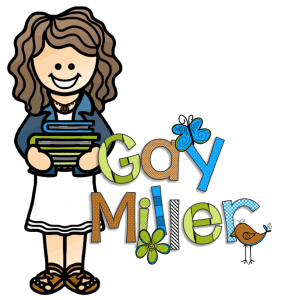
- Writing Strategies
Permanent link to this article: https://bookunitsteacher.com/wp/?p=91
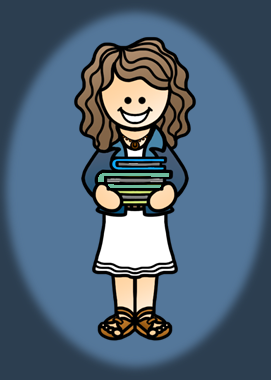
Click on the button below to follow this blog on Bloglovin’.

Clipart Credits
Caboose Designs
Teaching in the Tongass
Chirp Graphics
Sarah Pecorino Illustration
© 2024 Book Units Teacher.
Made with by Graphene Themes .
Professional Learning Board
Online Professional Development and License Renewal Courses for Teachers
- Free PD Discounts and Savings
- Find Courses Online PD for Teachers
- State Requirements
- About Us Tell a Friend FAQs Newsletter
- Contact Us Submit Purchase Order
How to Use the RAFT Strategy in the Classroom to Develop Reading and Writing Skills?
Posted by Network Support · Leave a Comment

Use the RAFT strategy in the classroom to encourage creative and organized writing. This writing activity will help develop the writing skills of students in a fun and creative way.
What is the RAFT strategy?
Writing is not easy for all students. In our classrooms, we see students struggling with the different phases or processes of writing. This strategy is used to help students understand the process of writing better. It teaches them the important concepts to consider when writing or reading a text. RAFT is an acronym that stands for Role, Audience, Format and Topic.
Why use the RAFT strategy?
This strategy is referred to as a “complete/one-stop” strategy, as it helps to address the most important concepts faced with writing. The application of the RAFT strategy has numerous benefits including helping students to:
- Understand their role as a writer
- Consider a topic for writing and analyze it from different perspectives
- Consider the audience/reader they are writing for and understand what needs to be conveyed
- Explore the different forms and styles of writing best suited for the assignment
- Effectively communicate their ideas and thoughts so that the audience/reader is able to easily comprehend the writing.
In a nutshell, the RAFT strategy enables students to identify their voice in writing and to write creatively considering different perspectives for a variety of audiences.
What does RAFT stand for?
The acronym RAFT stands for the following prompts:
- Role: Who is the writer?
- Audience: To whom are you writing?
- Format: Are you writing to persuade, entertain, inform, or describe?
- Topic: What are you writing about?
How to use the RAFT strategy in the classroom
Write down the RAFT acronym on the board and explain each prompt with examples. Pick a portion from your current reading assignment and decide with your students what role, audience, format and topic you can write about. For example, pick a portion from The Tempestand ask your students to do a writing assignment with these prompts using the RAFT strategy:
Role: Miranda
Audience: To herself
Format: Diary
Topic: Being on the island
The students are now able to follow the prompts to help them write creatively. After the students are finished they are able to read aloud to the rest of the class what they wrote. This will show all the different stories that the students created. This develops the text they are reading while practicing their creative writing skills. Over time, encourage students to apply the strategy individually, choosing their own RAFTs and applying it across different classes.
Like this article for teachers?
Browse the Professional Learning Board COURSE CATALOG to find related online courses for teachers in your state. Professional Learning Board is a leading provider of online professional development classes that teachers use to renew a teaching license or renew a teaching certificate.
Found in Blog · Tags classes for teacher license renewal , focus activity , literature activity , online courses for teachers , online PD for teachers , reading and writing skills , renew a teaching certificate , renew a teaching license , writing prompt

About Network
BBB Accredited Business

- Name * First Last
Better Business Bureau Accredited

First time here?

Tell a Friend

Click to tell your friends, colleagues and school administrators about PLB's courses.
Return to top of page
Privacy Policy Terms of Use
Powered by Professional Learning Board LLC
Copyright © 2024 · All Rights Reserved
- Click to Log In
Example of a Raft Writing Strategy

- Assignment Help
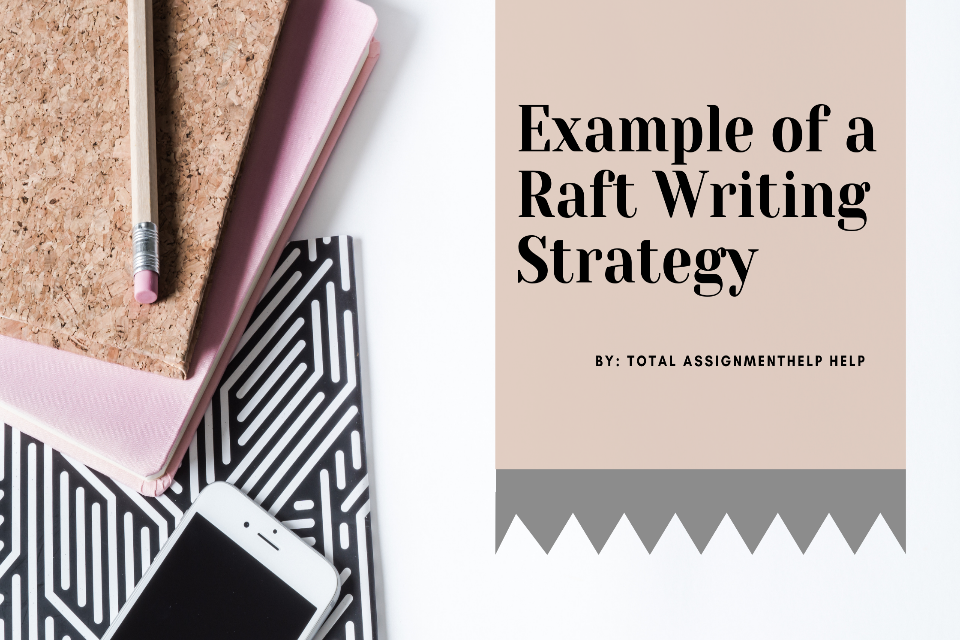
Rafts (Role, Audience, Format, Topic, Strong action words) are a composing strategy that urges academicians to consider their job as writers, the crowd for whom they will compose, and different composing styles.
Show a completed RAFT writing example on the overhead projector.
Use simple examples to illustrate each of these: purpose, target, format, and topic
Demonstrate how to create replies to the questions and lead a discussion about the essential components with the class.
Students should practice responding to prompts in small groups or on their own.
RAFT writing includes writing from a range of viewpoints.
- It aids students in the development of critical writing skills such as audience, primary theme, and organization.
- It asks students to respond to the following prompts in order to encourage them to think about writing in new ways:
- Writer’s Role: As a writer, who or what are you? Are you a pilgrim? Or a soldier? Or a President?
- Who is your intended audience for your writing? Is it a friend? Teacher? Or a newspaper reader?
- What is the theme of the paper you are writing in? Is that a letter, or something else? Is it a poem or a prose piece? Is there going to be a speech?
- The following is a topic with a strong verb: So, what exactly are you writing about? Why? What exactly is the point, or what is the topic?
- It can be applied to a wide range of assignment topics.
- Students improve as writers when they write more frequently.
- RAFT is a writing approach that educates students to realize their position as writers and to express their thoughts and mission to the reader in such a way that everything they write is clear.
- RAFT writing technique also helps students focus on the audience they’ll be writing for, as well as the numerous writing genres and topics they’ll be writing about.
- Teachers may use this method to encourage students to write creatively, explore many views on a topic, and write for a variety of audiences.
- Writing for distinct aims and audiences may entail the use of varied genres, material, and strategies, according to Deborah Dean in her book Strategic Writing.
Scholars are aiming to improve their writing by including and clarifying additional evidence.
They can use the RAFT writing format to help them do this.
“Restate The Prompt or Query” is an acronym for R
“Answer The Question” is represented by the letter A.
“Find and explain the evidence” is what the letter F stands for.
T is for tying up the loose ends of your writing.
Santa, Havens, and Valdes established the RAFT writing technique (Function, Audience, Format, Topic) to assist students to understand their role as writers and convey their ideas clearly by creating a sense of audience and purpose in their writing.
When writing or reading material, RAFT Education teaches students to think about significant themes.
It should be used to handle the essential writing principles; this technique is a “complete/one-stop” strategy.
With illustrations, explain each prompt.
Select a passage from The Tempe stand and invite your students to perform a writing project based on the prompts using the RAFT writing technique.
Students can now use the prompts to assist them in writing more creatively.
When the students have completed their writing, they can read it to the rest of the class.
This will show all of the different stories told by the pupils.
It allows children to practice creative writing while simultaneously helping them grasp the books they’re reading.
Frequently Asked Questions
How do you go about using the raft strategy.
Ans: The stages for a Raft writing strategy are as follows:
- They should be conscious of their obligations as a writer.
- Consider a writing topic and look at it from several perspectives.
- Consider the target audience/reader and the information that needs to be conveyed.
- Examine the many types and styles of writing that are most appropriate for the job.
What is the RAFT approach, and how does it work?
Ans: The RAFT writing (role, audience, format, and task) approach may be utilized to educate in an interactive and cooperative manner. RAFT is a way to assure that students are aware of their position as authors, their intended audience, the format of their writing, and the information that should be included.
What is the purpose of a raft?
Ans: Use the following hypothetical exercise to describe and discuss the fundamental components of RAFTS: Students are assigned a role that determines the tone of their work. Because of the audience, students are concentrating on the impact of word choice and precise subtleties. Format – may be tailored to a student’s specific interests or abilities. The RAFTs Writing Technique (Santa, 1988) is a technique that teaches students about their job as writers, the audience for whom they will write, the various writing forms, and the material they will write about.
What are the benefits of using writing prompts?
Ans: The benefit of using writing prompts is that a writing prompt’s objective is to pique a student’s interest in a topic and urge them to write thoughtfully and creatively about it. While a good prompt introduces and limits the writing topic, it should also include specific directions on how to complete the assignment.
Total Assignment Help Incase, you are looking for an opportunity to work from home and earn big money. TotalAssignmenthelp Affiliate program is the best choice for you.
Do visit : https://www.totalassignmenthelp.com/affiliate-program for more details
Total Assignment help is an assignment help Online service available in 9 countries. Our local operations span across Australia, US, UK, South east Asia and the Middle East. With extensive experience in academic writing, Total assignment help has a strong track record delivering quality writing at a nominal price that meet the unique needs of students in our local markets.
We have specialized network of highly trained writers, who can provide best possible assignment help solution for all your needs. Next time you are looking for assignment help, make sure to give us a try.
Looking for Assignment Help from Top Experts ?
Get the best Assignment Help from leading experts from the field of academics with assured onetime, 100% plagiarism free and top Quality delivery.
Thomas Smith
Related posts.

How to Become Cyber Security Engineer?

How to Develop a Powerful Writing Portfolio?

What Negative Effects Do Electronic Gadgets Have on Students?
Leave a reply cancel reply.
Your email address will not be published. Required fields are marked *
Save my name, email, and website in this browser for the next time I comment.
raft assignment
All Formats
Resource types, all resource types.
- Rating Count
- Price (Ascending)
- Price (Descending)
- Most Recent
Raft assignment
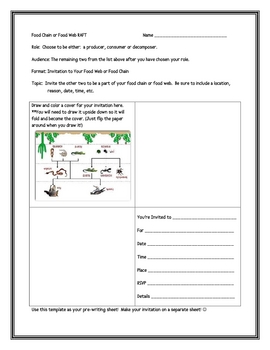
Food Chain or Food Web RAFT Layout and Writing Assignment
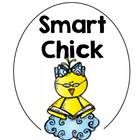
Rubric for RAFT writing assignments

- Rich Text Format
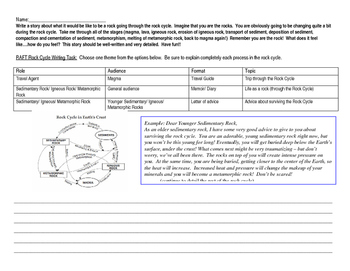
Rock Cycle RAFT Writing Assignment

- Word Document File
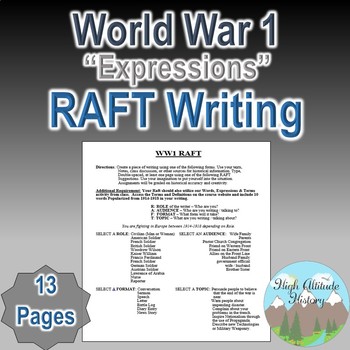
WWI (World War 1) Expressions Forum RAFT Writing Assignment

Natural Disaster Research Project/ RAFT assignment

Indian Horse RAFT Final Assignment

RAFT Assignment : Homelessness

- Google Docs™
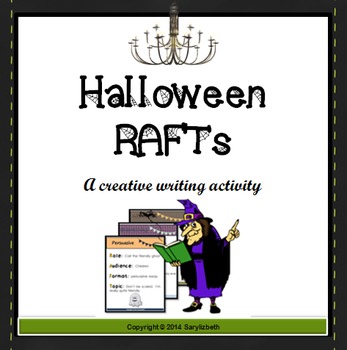
Halloween RAFT Writing Assignments
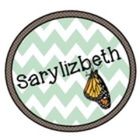
Dear Mr. Henshaw RAFT assignment

Anti-Slavery RAFT Letter Writing Assignment (grading rubric included)

A Raisin in the Sun RAFT Assignment - Murchison or Asagai

Characterization - "Rikki-tikki-tavi" RAFT Assignment w/Rubric

9/11 ( RAFT ) Writing Assignment

The Raft by Stephen King Assignment

Study Sync-The Boy Who Harnessed the Wind RAFT Writing Assignment

Environmental issues in Asia Photo Analysis and RAFT writing assignment

Serial Podcast Season One RAFT Writing Assignment

Novel Study-Holes RAFT Writing Assignment

Movies as Literature: Disney - Pixar's Brave R.A.F.T . Writing Assignment

SOL 5.7 Changing Earth Science RAFT Creative Writing Assignment

RAFTS Assignment : "Eleven" by Sandra Cisneros

Inside Out & Back Again RAFT Writing Assignment
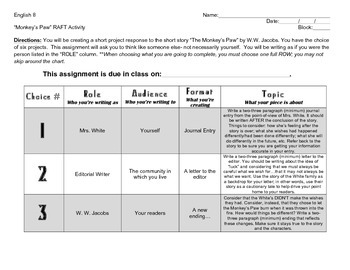
Monkey's Paw RAFT Assignment

The Odyssey: Book 22 RAFT Creative Role Writing Assignment
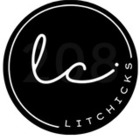
- Google Apps™
- We're hiring
- Help & FAQ
- Privacy policy
- Student privacy
- Terms of service
- Tell us what you think
Watch CBS News
Video of deadly fight that led to Apple River stabbing shown during opening arguments of Nicolae Miu trial
By Stephen Swanson , Jonah Kaplan , Riley Moser
Updated on: April 8, 2024 / 8:15 AM CDT / CBS Minnesota
UPDATE (11:15 a.m. on April 11) — Nicolae Miu has been found guilty of multiple criminal charges, including homicide, in the 2022 Apple River stabbings in Wisconsin. Read the updated story here.
HUDSON, Wis. — Investigators say video from July 2022 shows Nicolae Miu being pushed and hit by a group of tubers on the river before he stabbed five people, killing 17-year-old Isaac Schuman . The victims ranged in age from 17 to 24 and were from Wisconsin and Minnesota.
The trial for a 54-year-old Prior Lake man accused of killing a teen and stabbing four others on the Apple River in Wisconsin nearly two years ago began on Monday.
Witnesses said Miu was initially in the river with goggles and a snorkel. A group of tubers accused of him of looking at young girls underwater, but Miu told investigators he was looking for a friend's missing cellphone.
RELATED: Man charged with stabbing tubers in Wisconsin says he's hired one of Kyle Rittenhouse's attorneys
The prosecution argues that Miu was the aggressor by stabbing five people. A knife, believed to belong to Miu, was later recovered by officers on the river bank.
Miu's defense attorneys, though, see it much differently, saying the teens taunted him, then surrounded him, and Miu was fighting for his life.
He is charged with first-degree intentional homicide in Schuman's death, and attempted first-degree intentional homicide in the stabbings of Ryhley Mattison, A.J. Martin, Dante Carlson and Tony Carlson. He pleaded not guilty to all charges in September 2022.
If convicted, Miu could be sentenced to life in prison.
Opening statements
The prosecution
The trial began with the opening statement from state prosecutor Karl Anderson, who called the deadly attack "senseless and horrific."
"All Nicolae had to do was walk away," Anderson said. "He eventually did walk away, but not after stabbing five people."

Anderson showed several screenshots from two videos taken by one of the members of Schuman's group, identified as Jawahn C.
Anderson said a member of Miu's group named Ariel dropped his cellphone in the river. Ariel said it wasn't that big of a deal because he had insurance, but Miu insisted on trying to retrieve it.
Miu approached Schuman's group. In the first video, approximately nine seconds in length, Jawahn C. is heard yelling "(Miu) says he's looking for little girls!"

In the second video, Miu is shown running towards Schuman's group.
A group of adult tubers, identified as the Carlson group, then came over to intervene. The Schuman group is heard cheering when they arrive.
While showing several screenshots from the second video, which is almost 3 minutes and 30 seconds long, Anderson underlined that audio in the video indicates Miu was asked more than 20 times by the Schuman and Carlson groups to go away.
In the several screenshots, Anderson noted that before the physical confrontations begin, Miu appeared to be "smirking" while holding his knife low by his side. Anderson also stated that at no point did Miu speak or tell anyone to get back, and he didn't step back or walk away from the groups.

Anderson said the first time the confrontation turned physical was when Miu punched a member of the Carlson group named Madison. Another member of the group, Dante Carlson, then punched Miu, causing him to fall into the shallow river.
Anderson said in a 25-second span, Miu then stabbed four members of the Carlson group: A.J. Martin, Ryhley Mattison, Dante Carlson and Tony Carlson. Miu also fatally stabbed Schuman, who suffered wounds to his torso, chest and heart.
"You don't see anyone besides Nicolai with a weapon. You don't see the boys touch Nicolai until after stabbings start," Anderson said.
Anderson said no one in either group was initially aware that Miu was stabbing people until they saw Martin in the water, who had been disemboweled. Anderson also pointed out that Miu had his knife's blade pointed upwards in the attacks.

Afterward, Anderson said Miu walked back to his tubing group and told them "they took his knife." Several members of Miu's group called 911 to say several people were hurt, but they said they didn't know what happened. His group stayed at a sandbar until law enforcement arrived. One member of his group also helped some of the victims before speaking with police.
Anderson said Jawahn C. took a screenshot of Miu from the video and gave it to law enforcement, who quickly disseminated it. Employees then spotted Miu and alerted deputies, who then took Miu — who was then clothed and wearing a hat and sunglasses — into custody. Anderson said members of Miu's group protested his arrest, saying they "had the wrong guy."
Anderson said when Miu was in the back of a squad car at the scene, he allegedly said to the sheriff, "What's going on? I hear somebody got stabbed and I fit the description." Miu was then told he was under arrest for homicide and attempted murder.

When he was interviewed later by law enforcement, Anderson said Miu was surprised to find there was video of the attacks. He told investigators he didn't have a knife, but members of Schuman's group were armed with knives. Miu allegedly said they knocked off his goggles and snorkel and threw them in the water and they tried to pull his pants down.
"I just grabbed the kid's knife. I didn't even know if I was holding it right. I just grabbed it from him because he tried to poke me with it, so, I feared for my life," Miu said, according to a transcript shown in a slide by Anderson.

Anderson said Miu went on to tell investigators that he didn't know where the knife was that he used to defend himself with, but later a member from Miu's group told investigators they saw him "throw something onto shore before walking back to their group."
Anderson said when investigators told him four people were hurt and one died, Miu allegedly said, "Was that because they fought each other?"
Investigators later recovered Miu's knife on a river bank, and it tested positive for DNA from some of the victims.

The defense
Defense attorney Aaron Nelson's opening statement repeatedly hammered home that Miu stabbed the other tubers in self-defense because he feared for his life.
Nelson began his statements with biographical details on Miu, who grew up in Romania and immigrated to the U.S. as a teen. He said Miu speaks several languages and described him as an "intelligent" and "peaceful" man.
He also emphasized that Miu was an "unfit 260-pound man" who had undergone a quadruple bypass surgery two years before the deadly encounter.

Nelson said Miu only brought his knife at the request of a friend so they could use it to cut the twine needed to connect the group's tubes before they coasted down the river. He said Miu likes to snorkel and brought his equipment, eventually using it to find his friend's phone.
Nelson described Schuman's group as "drunk teens" who were "smoking stuff." He also said Schuman's autopsy results revealed he had a blood alcohol level of .219, and his friends later told investigators Schuman was the most sober one in their group that day.
Nelson said the group began to "heckle" and "humiliate" Miu based on his appearance and loudly accused him of being a "raper" who was "looking for little girls." Nelson also pointed out that there were no "little girls" near the groups during the altercation.

He said Miu began to run towards Schuman's group because he saw one of them hold up what he believed to be the cellphone he was searching for, and dropped his goggles and snorkel into the river in the process.
Nelson accused Schuman's group of then threatening Miu with physical harm.
"'You got 10 seconds,' that's what that group of drunk teenagers says to that old man," Nelson said.
He said Miu then began to walk towards the Carlson group to appeal to them, but the group was immediately hostile. Nelson said an older member of the Carlson group, Quentin Carlson, later told investigators that he sent his sons Tony and Dante over to Miu and the Schuman group because he worried "the old guy" was going to get hurt.

Nelson said Carlson's group was swayed by the Schuman group's claims that Miu was a "predator" looking for "little girls," and Miu was then soon surrounded.
"They got a crowd. They told lies to make the crowd angry," Nelson said. "Nick Miu standing in the river with 13 strangers. Thirteen drunk, angry strangers. Thirteen against one. They yelled and they screamed in order to attract a crowd."
Nelson said there were inconsistencies between the parties involved in their respective interviews over whether Miu punched, slapped or pushed a member of Carlson's party named Madison, which led to Miu being knocked into the river by Dante Carlson.

"When he tries to get up out of the water, they attack him in the front, smack him across the front of the face while somebody comes from behind and starts pushing him down. And that moment he feared for his life and he responded with self-defense," Nelson said.
He said Miu then began to make "quick, short jab motions" with his knife towards the mob.
"When people attacked Miu, he responded," Nelson said.

Nelson then showed three images of what appeared to be Schuman strangling Miu, which he said caused Miu to fall backward and fatally stab Schuman by accident.
"I'm sure (Schuman) was a wonderful man, wonderful human being. We're going to hear a lot about him, but in this moment, on this day, on that river, when he was drunk, he tried to strangle Nick Miu," Nelson said.
Nelson said after the stabbings, Miu tossed the knife because he was "suffering from shock and trauma."
The first witness
Ryan Nelson was the first witness called by the prosecution.
Nelson said he was positive that Miu started the fight when he hit Madison.
"It looked like he struck her definitively with his right hand," Nelson said.
During an intense cross-examination, defense attorneys challenged Nelson's memory of events.
The trial continues on Tuesday at St. Croix County Courthouse in Hudson, Wisconsin.
- Deadly Stabbing
Stephen Swanson is a web producer at WCCO. A 20-year station veteran, Stephen was a floor director for a decade before moving to the newsroom, where he focuses on general assignment reporting.
Featured Local Savings
More from cbs news.

Nicolae Miu takes stand in his defense on day 7 of Apple River stabbing trial

Verdict possible Thursday in Nicolae Miu's Apple River stabbing trial

Day 8 of Nicolae Miu's Apple River stabbing trial features closing arguments; case handed to jury

Video of Nicolae Miu's police interview shown during Apple River stabbing trial: "I feared for my life"

IMAGES
VIDEO
COMMENTS
RAFT helps students structure their writing and think more deeply about the purpose and audience of their work. RAFT helps students learn to write from different points of view. RAFT encourages students to think creatively about writing by responding to the role, audience, format, and topic prompts. RAFT can be used effectively across different ...
Explain to your students the various perspectives writers must consider when completing any writing assignment. Examples of different roles, audiences, formats, and topics can be found in a list of Picture Book RAFTs by Doug Fisher and Nancy Frey.; Decide on an area of study currently taking place in your classroom for which you could collaborate with the students and write a class RAFT.
The RAFT method is an approach to projects that is designed for engaging students, creating assignments and rubrics, and providing opportunities for students to customize learning to their own learning styles. It is student-directed differentiation at its best, and yet can be held to a rigorous evaluation standard. Here is how it works. R - ROLE.
The RAFT writing strategy is a powerful tool for students to use when composing a variety of writing pieces. The acronym RAFT stands for Role, Audience, Format, and Topic. By considering these elements, students can create a clear and focused writing piece that effectively communicates their message to their intended audience.
Based on the US Health Department video we watched to complete your graphic organizer showing the research findings about short and long term consequences of alcohol and tobacco use, complete two of the following R.A.F.T. assignments. Choose one from A and B, and one from C and D. You will be graded based on the rubric displayed on the front board.
The RAFT strategy encourages students to write creatively, consider a topic from a different perspective, and to gain practice writing for different audiences. RAFT is a writing strategy that helps students understand their role as a writer, the audience they will address, the varied formats for writing, and the topic they'll be writing about.
R.A.F.T. Writing Assignments Effective writing assignments enable students to write fluently and purposefully for an audience. R.A.F.T. can help you identify and incorporate the elements of an effective writing assignment. The R.A.F.T. strategy engages students in explaining what they know about a topic and then elaborate. What is it?
Following the RAFT activity, students will share their research and perspectives in mixed role groups of approximately five. Groups will have a "discussion agenda" to guide their conversation. -Kathryn Seaman. RAFT Assignments Grade 10 English. Know: Voice, Tone, Style Understand: e c i o v a s a h r e t i r w y r e v •E
After students have finished the reading, identify the role, audience, format and topic (RAFT) for the writing assignment. Assign the same role for all students, or let them choose from several different roles. Â Classroom Management. Describe the various perspectives that writers must consider when completing any writing assignment.
This semester, I deleted the artwork for the RAFT strategy. Last week, I posted five RAFT worksheets around the classroom. Students were instructed to write a 75-word speech or letter about work ethic skills. They were given a rubric for this assignment and discussed the expectations for this assignment in a think-pair-share mode.
RAFT Writing Prompts. RAFT writing prompts are written assignments that encourage students to write about topics from a perspective other than their own. RAFT writing prompts engage critical thinking and creativity as students use their imaginations plus knowledge to mold information in new ways. Following you will find many great RAFT writing ...
RAFT Writing has students respond when the Role, Audience, Format, and Topic are laid out for students to do their writing, often showcasing their content knowledge. It's also a great tool to help teachers write prompts for those content areas. Over the years, however, I've used RAFT as a writing strategy for analyzing prompts in elementary ...
assignment. The assignment is also outlined on the student page): RAFT Assignment 1. Your writing must address these four important factors: Role Audience Format Topic 2. Brainstorm ideas about a topic. The topic must be related to energy use in transportation. Narrow your ideas down to 2 or 3 possible topics. 3. Sketch a RAFT for each of your ...
Before having students write their own RAFT, use this printout to model how students should use this technique. Discuss with your students the basic premise of the content for which you'd like to write, but allow students to help you pick the role, audience, format, and topic to write about. Allow student input and creativity as you craft ...
3. Write RAFT on the board and list possible roles, audiences, and formats that are appropriate for each topic. 4. Ask students to choose one of the examples to write about, or after discussing a topic, have students create their own RAFT writing assignment. See the following examples from several curricular areas. Examples of Raft Assignments Role
Choice in writing and assessment can be motivating and builds in differentiation, so you don't have to create a bunch of assignments for each student to meet them where they are. One of the most versatile and creative writing strategies is the RAFT (Role, Audience, Format, Topic). As the teacher, you can provide parameters for this assignment connected to a goal or standard from your content area.
Using RAFT writing strategies with artworks The RAFT (Role, Audience, Format, Topic) writing strategy, developed by Santa, Havens, and Valdes [1], helps students understand their role as a writer and communicate their ideas clearly by developing a sense of audience and purpose in their writing. Works of art are rich sources of ideas and details […]
A RAFT lesson covers many teaching standards. In addition to the four areas of communication, assignments may also practice specific skills. For example, in the printables below the RAFT activity requires students to use onomatopoeia and/or alliteration. The RAFT strategy works well with literature.
This strategy is used to help students understand the process of writing better. It teaches them the important concepts to consider when writing or reading a text. RAFT is an acronym that stands for Role, Audience, Format and Topic. Pick a portion from your current reading assignment and decide with your students what role, audience, format and topic you can write about.
Application. Provide students with a RAFT assignment for the unit under study. Have them identify each of the four components before starting to write. RAFT can also be used as a peer review strategy to determine whether students have written to a prompt. Students can be given choice in one or more elements of RAFT.
Example of the RAFT strategy in action: With illustrations, explain each prompt. Select a passage from The Tempe stand and invite your students to perform a writing project based on the prompts using the RAFT writing technique. Students can now use the prompts to assist them in writing more creatively.
Designing a RAFT assignment is an important process that requires planning and preparation. To begin, identify the learning objectives and standards for the unit or lesson. Then, choose a topic ...
A one page RAFT writing assignment and pre-writing layout for writing a RAFT about a food chain or food web. Role: Producer, COnsumer, Decomposer (choose one) Audience: The other two not chosen Format: Invitation Topic: Invite the remaining two to be part of your food chain or food web. A great way for students to be creative and to show what ...
A 20-year station veteran, Stephen was a floor director for a decade before moving to the newsroom, where he focuses on general assignment reporting. First published on March 31, 2024 / 8:26 PM CDT